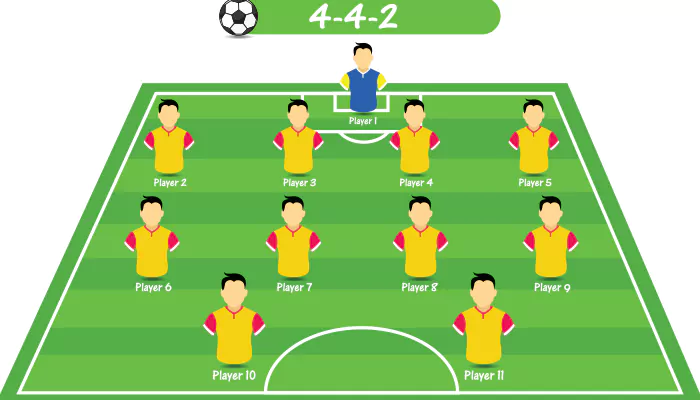
Strategic changes throughout the history of football
Football tactics have undergone a remarkable evolution over the decades, reflecting changes in playing styles, philosophies, and strategic approaches. From the innovative Total Football of the Netherlands in the 1970s to the mesmerising Tiki-Taka of Spain in the 21st century, each era has seen the emergence of new tactics that have left an indelible mark on the game. Let's explore the fascinating evolution of football tactics and how they have shaped the sport we know and love today.
Pioneered by Dutch coach Rinus Michels and epitomised by the Netherlands national team in the 1970s, Total Football revolutionised the way the game was played. Characterised by fluid movement, positional interchangeability, and relentless pressing, Total Football emphasised collective teamwork and individual creativity, allowing players to seamlessly transition between attacking and defensive roles.
In contrast to the expansive style of Total Football, Italian Catenaccio, popularised by clubs like Inter Milan and the Italian national team in the 1960s, prioritised defensive solidity and organisation. Catenaccio employed a deep-lying sweeper or libero to anchor the defence, while the rest of the team focused on maintaining a compact shape and frustrating opponents with disciplined defending.
During the 1980s and 1990s, English football embraced a direct and physical style of play known as the Long-Ball game. Teams relied on long passes and aerial duels to bypass opponents' defences and create scoring opportunities. While criticised for its lack of aesthetic appeal, the Long-Ball game was effective in producing results, as evidenced by the success of clubs like Wimbledon FC under manager Bobby Gould.
In the 2000s, Spain's national team, under the guidance of coach Luis Aragonés and later Vicente del Bosque, introduced the world to Tiki-Taka – a possession-based style of play characterised by short, quick passes, constant movement off the ball, and high pressing to win back possession. Tiki-Taka prioritised ball retention and control, allowing Spain to dominate opponents through superior possession and positional play.
In recent years, German football has embraced the concept of Gegenpressing, or counter-pressing, as popularised by coaches like Jürgen Klopp and Pep Guardiola. Gegenpressing involves immediately pressing and regaining possession after losing the ball, often in the opponent's half, to disrupt their attacking rhythm and create scoring opportunities through turnovers.
The evolution of football tactics reflects the sport's dynamic nature and the constant quest for innovation and success. From the rigid formations of the early days to the free-flowing attacking style of Total Football pioneered by the Dutch in the 1970s, each tactical revolution has left a lasting impact on the game. Total Football, characterised by positional fluidity and an emphasis on attacking from all areas of the pitch, forever changed the way teams approached the game. The tiki-taka style championed by Barcelona in the late 2000s and early 2010s, with its focus on short, intricate passing and possession domination, further emphasised technical mastery and tactical control.
These tactical revolutions have influenced coaching philosophies, playing styles, and the way we perceive and appreciate football. As the sport continues to evolve, with factors like data analysis and player fitness playing an increasingly important role, it is certain that new tactics and strategies will emerge, shaping the future of football for generations to come. What will the next tactical innovation be? Will it prioritise speed and counter-attacks, or will we see a return to a more physical style of play? Only time will tell, but one thing is for sure: the beautiful game will continue to evolve, driven by the relentless pursuit of victory and the constant desire to push the boundaries of what's possible on the pitch.